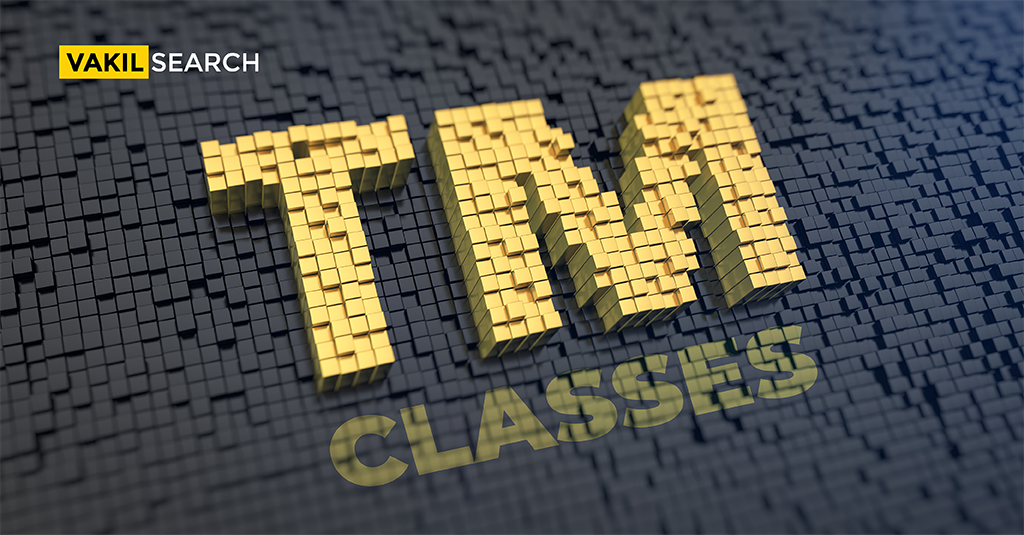Do you have a new product idea and are planning to launch it? Well, you are on the right page! Read the advantages of Trademark Registration before going any further.
The trademark class system is a crucial aspect of the intellectual property landscape, providing a systematic and organized way to categorize goods and services for trademark registration. By grouping similar products and services into specific classes, the trademark class system streamlines the registration process and ensures that trademarks are adequately protected in their respective categories. In this comprehensive guide, we will explore the trademark class list, shed light on the four types of trademarks, and delve into the details of Class 1 and Class 7 in the trademark classification system.
What is the Difference between a Trademark and a Brand?
In the current times, people trust all branded products and services. But do you know what is the difference between a brand and a trademark?
Well, a brand is the name given to a product/ service by itss owner to create a unique identity in the market. A brand is considered the spirit of the company. It helps in distinguishing it from other products of similar nature in the market.
However, the issue is that a brand is easy to duplicate and is a common tactic used by many to become famous in a short span of time. To avoid this issue, the concept of trademark was developed.
A brand does not guarantee some kind of legal protection from any unauthorised usage, but a trademark does.
Understanding the Correct Way to Use the Trademark Class System
The trademark classification system is so vast that choosing from it becomes a complex task. That is why some of the points must be taken into consideration before choosing. Here are some of the points to keep in mind:
-
Choose one specific class to initiate the trademark registration process
Make a thorough choice before choosing the final class. Because if you get confused and choose the wrong class, your application will take longer.
Get professional help if you feel the need before taking the leap. And once you are confident enough about the class, you can go ahead and apply for the trademark registration process.
-
Determining whether your chosen trademark is registered or available
A particular category of goods or services has many of them registered with a trademark. It is therefore a need to check that your trademark is not similar to products falling in the same category.It is a big risk to consider before going forward with your decision. Check the product category like chemicals, building materials, musical instruments, etc. Even a slight copy of some already registered trademark might risk you infringing an existing trademark.
Trademark Class List
The Nice Classification system, established by the Nice Agreement, is the most widely used international classification system for trademarks. It comprises 45 classes, where the first 34 classes are dedicated to goods, and the remaining 11 classes cover various services. Here’s an overview of the trademark class list:
Goods Classes (Class 1 – Class 34)
Class 1: Chemicals used in industry, science, and photography, as well as certain unprocessed artificial resins, unprocessed plastics, and manures.
Class 2: Paints, varnishes, colorants, and preservatives used for industrial, commercial, and artistic purposes.
Class 3: Cosmetics, perfumes, and cleaning preparations for personal use.
Class 4: Industrial oils and greases, lubricants, and fuels.
Class 5: Pharmaceutical and veterinary preparations, medical substances, and dietetic substances.
Class 6: Metals and metal goods, building materials, and transportable buildings.
Class 7: Machines and machine tools, motors and engines (except for land vehicles), and machine coupling and transmission components.
Class 8: Hand tools and implements, cutlery, and side arms.
Class 9: Scientific, nautical, surveying, photographic, cinematographic, and optical apparatus and instruments; computer hardware and software.
Class 10: Surgical, medical, dental, and veterinary instruments and apparatus.
Services Classes (Class 35 – Class 45)
Class 35: Advertising, business management, and business administration services.
Class 36: Insurance, financial, and real estate affairs.
Class 37: Building construction, repair, and installation services.
Class 38: Telecommunications services.
Class 39: Transport, packaging, and storage of goods.
Class 40: Treatment of materials, custom manufacturing, and recycling services.
Class 41: Education, entertainment, and sports and cultural activities.
Class 42: Scientific and technological services, research, and design services.
Class 43: Services related to providing food and beverages, temporary accommodation, and restaurant services.
Advantages of the Trademark Class System
The following are the major advantages of the trademark class system:
1. The Trademark Rights are Exclusive
The owner has the soul right to the trademark rights of the registered trademark product. This will help prevent any unauthorised use of the product/ service by any third party/individual.
The owners can use the trademark to protect any products or services falling under the class that is applied to the registered trademark.
2. Good for Gaining Customer Trust and Goodwill
The registered trademark is the mark of establishing good standards and goodwill among your customers. The product becomes more credible by using a trademark.
The registered trademark communicates to your customers about the uniqueness of your brand and the vision of your company.
3. Protection Against any Third Party Trademark Infringement
None of your competitors/ any set of individuals can use your registered trademark. Only the owner of the registered trademark has the right to use it for their products.
In case you find anyone using your registered trademark, you can take legal action against them for trademark infringement.
4. Creating a Valuable Asset
Your registered trademark is a valuable asset for your business. You can now use it for franchising, commercially contracting, or have the rights for selling your innovation.
Your product or service gains an extra footing in the marketplace with the gain of a trademark. It is an intangible asset that can be assigned to any new product or service you launch in the market.
5. Your Product or Service has a Different Identity
Trademarks give unique identity to your product or service.
Who does not recognize the half eaten apple?
Yes, that’s the logo of Apple— a registered trademark that is now the identity of the tech mammoth.
The quality of the product is your responsibility. But once you have gained the loyalty of your customers, the ground is set for growth.
Customers often attach the product’s quality to its brand name. They recognise the trademark identity, which in turn attracts more and more customers.
6. 10 Years of Trademark Protection
Trademark registration is done onc. Thereafter, you need to pay a minimal renewal fee, after 10 years of registration. Nowadays, online registration can also be done that has comparatively lower maintenance cost.
You see how with a minimal cost you can create a unique brand image for your business?
And this uniqueness is beneficial for your firm in the long run.
7. Use of ® Symbol
This ® symbol signifies that your products and services are now trademark registered. Furthermore, this identifies your ownership and that the registered trademark cannot be used by anyone without your permission.
8. Establish a Foundation for Global Trademark Registration
What if you want to make a global identity?
In that scenario, you must have to get a global trademark registration done. If you already have a trademark registered in India, that means, you have a reputation in India.
This lays a foundation for you to prove that your firm can go global. Having a trademark already registered in India will get you good chances of getting a global trademark registered too.
FAQs
What are the 4 types of trademarks?
The four types of trademarks are as follows: Fanciful Trademarks: These are invented words with no dictionary meaning, such as Google or Xerox. Arbitrary Trademarks: Arbitrary trademarks use common words unrelated to the products or services they represent, like Apple for computers. Suggestive Trademarks: Suggestive trademarks imply a quality or characteristic of the goods or services without directly describing them, like Netflix for streaming services. Descriptive Trademarks: Descriptive trademarks directly describe the goods or services, such as Vision Center for an eye care clinic.
What is the Class of a Trademark?
The class of a trademark refers to the specific category or group under which goods or services associated with the trademark fall. The Nice Classification system assigns a numerical value to each class, facilitating the registration process.
What is Class 1 in Trademark?
Class 1 in the trademark classification system includes chemicals used in industry, science, photography, agriculture, horticulture, and forestry. This class covers a wide range of chemical substances and compounds.
What is Class 7 in Trademark?
Class 7 in the trademark classification system covers machines and machine tools, motors and engines (except for land vehicles), and machine coupling and transmission components. This class includes various industrial and mechanical equipment.
Conclusion
The trademark class system is a fundamental framework for organizing and registering trademarks for goods and services. It ensures that trademarks are adequately protected within their specific categories, streamlining the registration process and preventing conflicts with similar trademarks. Businesses seeking trademark protection should carefully identify the appropriate class for their goods or services according to the Nice Classification system. Understanding the classification system and the different types of trademarks empowers businesses to safeguard their brand identity, uphold their intellectual property rights, and thrive in an increasingly competitive marketplace. As trademarks continue to play a vital role in brand recognition and consumer trust, adherence to the trademark class system remains essential for businesses operating at a global scale.
Click here and get your trademark registration process completed with VakilSearch.
Also, Read:










